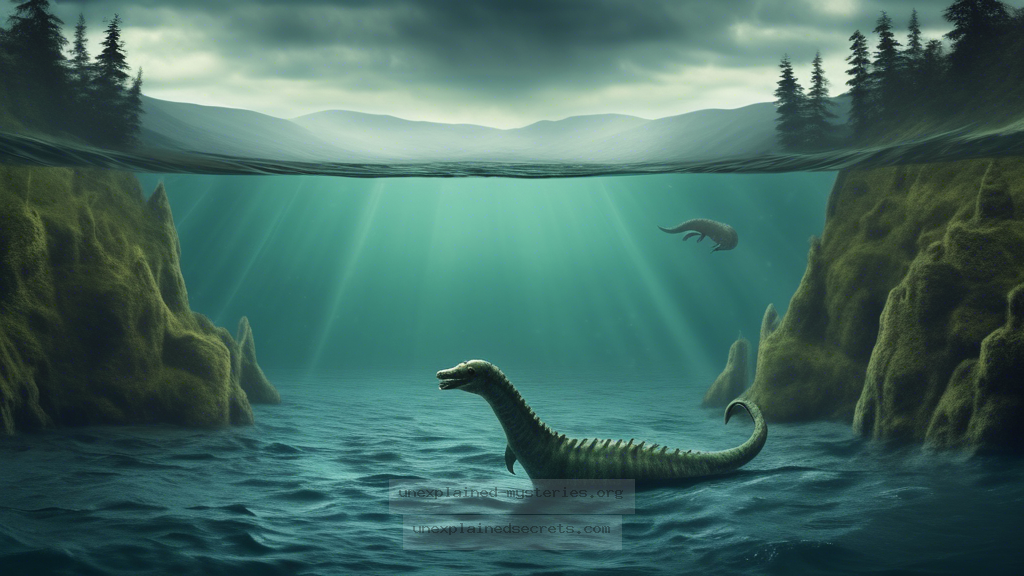What Lies Beneath the Surface: The Mystery of the Loch Ness Monster
What Lies Beneath the Surface: The Mystery of the Loch Ness Monster
The Loch Ness Monster, often affectionately dubbed “Nessie,” has become an emblematic figure in the realm of cryptozoology. This elusive creature has captured the imagination of many, leading to a plethora of theories, sightings, and investigations over the decades. But what exactly is the Loch Ness Monster? Is it a prehistoric creature, a myth, or simply a product of human imagination? Understanding this mystery not only matters to enthusiasts of the unexplained but also highlights broader themes around belief, science, and the natural world.
Historical Context of the Loch Ness Monster
The legend of the Loch Ness Monster dates back to ancient times, with the earliest recorded accounts appearing in the 6th century. According to the biography of St. Columba, a Christian missionary, he encountered a “water beast” in Loch Ness that threatened one of his followers. This account laid the groundwork for future sightings and stories surrounding Nessie. Over the years, various sightings have been documented, each adding to the lore and intrigue of this creature.
In the 1930s, Nessie’s fame skyrocketed with the publication of the infamous “Surgeon’s Photograph,” which allegedly showed a large creature in the loch. While it was later revealed to be a hoax, it ignited global interest in the Loch Ness Monster, leading to numerous expeditions and further sightings. Today, Nessie is not only a cultural phenomenon but also a significant part of Scottish tourism, drawing thousands of visitors to Loch Ness every year.
Core Concepts: What Is the Loch Ness Monster?
The identity of the Loch Ness Monster has been the subject of intense speculation. The most popular theories suggest that Nessie may be a surviving plesiosaur, a type of marine reptile that lived during the time of the dinosaurs. Advocates of this theory cite the creature’s long neck and large body as characteristics reminiscent of these ancient beings.
Other theories propose that the Loch Ness Monster could be a large eel, a giant catfish, or even a whale. Each of these explanations attempts to reconcile the creature’s reported size and characteristics with known species. Some researchers even suggest that the sightings could be attributed to misidentification of ordinary animals or floating debris.
Practical Implications: Evidence and Investigations
Numerous investigations have been conducted in attempts to find concrete evidence of the Loch Ness Monster. One of the most notable was the “Operation Deepscan” in 1987, where sonar equipment was used to scan the loch’s depths. The operation revealed several large, unidentified objects, sparking renewed excitement and speculation. However, no definitive proof of Nessie’s existence was found.
In more recent years, advancements in technology have allowed for more sophisticated investigations. In 2018, researchers utilized environmental DNA (eDNA) sampling to analyze water samples from Loch Ness. This method can detect genetic material shed by living organisms, providing a clearer picture of what resides in the loch. Surprisingly, the results showed a high diversity of species, including fish and birds, but no evidence of a large creature like Nessie.
Alternative Perspectives: Skepticism and Belief
While many enthusiasts continue to believe in the Loch Ness Monster, skepticism remains strong among scientists and rationalists. Critics argue that the majority of sightings are anecdotal and lack credible evidence. They point out that psychological phenomena, such as pareidolia—the tendency to see patterns, like faces or creatures, in random stimuli—may explain some sightings.
Furthermore, the media’s role in perpetuating the legend cannot be overlooked. Sensational stories and images have fueled public interest, often leading to a cycle of belief based on folklore rather than scientific evidence. This raises important questions regarding the nature of belief, the human desire for mystery, and the impact of media on public perception.
Common Misconceptions and Clarifications
Among the many myths surrounding the Loch Ness Monster, several misconceptions persist. One common belief is that the creature is consistently sighted and documented; however, many sightings lack corroborating evidence, such as photographs or physical proof. Additionally, the idea that the loch is too deep to explore is misleading; while it is true that Loch Ness is one of the largest bodies of freshwater in the UK, modern sonar technology has explored its depths extensively.
Another misconception is that Nessie is a singular entity. Many reports describe different characteristics, suggesting that what people perceive as Nessie could be multiple creatures or phenomena. The variations in descriptions could be attributed to the observer’s expectations and imagination, further complicating the mystery.
Best Practices for Investigation and Study
For those interested in investigating the Loch Ness Monster, several best practices can be followed to ensure a rigorous and scientific approach. First and foremost, establishing a clear hypothesis based on existing evidence is crucial. This ensures that investigations are grounded in reality rather than sensationalism.
Utilizing a combination of techniques is also important. Employing sonar, eDNA analysis, and visual observation can provide a comprehensive approach to understanding what lies beneath the surface. Collaboration with local scientists and institutions can enhance credibility and resources, potentially leading to more fruitful investigations.
Future Developments: Ongoing Research and Exploration
As technology continues to advance, the potential for discovering new evidence of the Loch Ness Monster increases. Future explorations may incorporate artificial intelligence and improved imaging techniques, allowing researchers to analyze vast amounts of data more effectively. Moreover, as environmental DNA methods evolve, they could provide deeper insights into the biodiversity of Loch Ness and potentially uncover previously unseen species.
Interest in cryptozoology is growing, with more researchers and enthusiasts seeking to uncover the truth behind legendary creatures. This resurgence may lead to more organized scientific endeavors focused specifically on Loch Ness, promising exciting developments in the years to come.
Conclusion: The Enduring Mystery of Nessie
The Loch Ness Monster remains one of the most captivating mysteries in cryptozoology. While skeptics challenge the validity of its existence, believers continue to hold onto hope that evidence will one day surface. Through historical context, core theories, and ongoing investigations, we gain a clearer understanding of this enigmatic creature. Whether you are a believer or a skeptic, the story of Nessie invites us to explore the boundaries of science and imagination, reminding us that some mysteries might never be fully unraveled.
As we continue to question what lies beneath the surface of Loch Ness, the enduring fascination with the Loch Ness Monster serves as a testament to humanity’s innate curiosity and desire to explore the unknown.
Other Articles
Recent Posts
- What Happened to Flight MH370? The Conspiracy Theories That Still Haunt Us
- What Secrets Lurk Within the Walls of the Infamous Trans-Allegheny Lunatic Asylum?
- What Evidence Supports the Existence of Bigfoot in the Pacific Northwest?
- What Happened to the Indus Valley Civilization? Unraveling the Mysteries of Ancient Urban Life
- Can Telepathy Be Scientifically Proven Through Laboratory Evidence?







